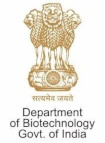Stochastic steps in secondary active sugar transport.
| Title | Stochastic steps in secondary active sugar transport. |
| Publication Type | Journal Article |
| Year of Publication | 2016 |
| Authors | Adelman JL, Ghezzi C, Bisignano P, Loo DDF, Choe S, Abramson J, Rosenberg JM, Wright EM, Grabe M |
| Journal | Proc Natl Acad Sci U S A |
| Volume | 113 |
| Issue | 27 |
| Pagination | E3960-6 |
| Date Published | 2016 07 05 |
| ISSN | 1091-6490 |
| Keywords | Glucose, HEK293 Cells, Humans, Markov Chains, Molecular Dynamics Simulation, Monte Carlo Method, Patch-Clamp Techniques, Sodium, Sodium-Glucose Transporter 1 |
| Abstract | Secondary active transporters, such as those that adopt the leucine-transporter fold, are found in all domains of life, and they have the unique capability of harnessing the energy stored in ion gradients to accumulate small molecules essential for life as well as expel toxic and harmful compounds. How these proteins couple ion binding and transport to the concomitant flow of substrates is a fundamental structural and biophysical question that is beginning to be answered at the atomistic level with the advent of high-resolution structures of transporters in different structural states. Nonetheless, the dynamic character of the transporters, such as ion/substrate binding order and how binding triggers conformational change, is not revealed from static structures, yet it is critical to understanding their function. Here, we report a series of molecular simulations carried out on the sugar transporter vSGLT that lend insight into how substrate and ions are released from the inward-facing state of the transporter. Our simulations reveal that the order of release is stochastic. Functional experiments were designed to test this prediction on the human homolog, hSGLT1, and we also found that cytoplasmic release is not ordered, but we confirmed that substrate and ion binding from the extracellular space is ordered. Our findings unify conflicting published results concerning cytoplasmic release of ions and substrate and hint at the possibility that other transporters in the superfamily may lack coordination between ions and substrate in the inward-facing state. |
| DOI | 10.1073/pnas.1525378113 |
| Alternate Journal | Proc. Natl. Acad. Sci. U.S.A. |
| PubMed ID | 27325773 |
| PubMed Central ID | PMC4941443 |
| Grant List | R01 DK019567 / DK / NIDDK NIH HHS / United States R01 GM089740 / GM / NIGMS NIH HHS / United States P41 GM103712 / GM / NIGMS NIH HHS / United States R01 GM078844 / GM / NIGMS NIH HHS / United States T32 DK061296 / DK / NIDDK NIH HHS / United States |

